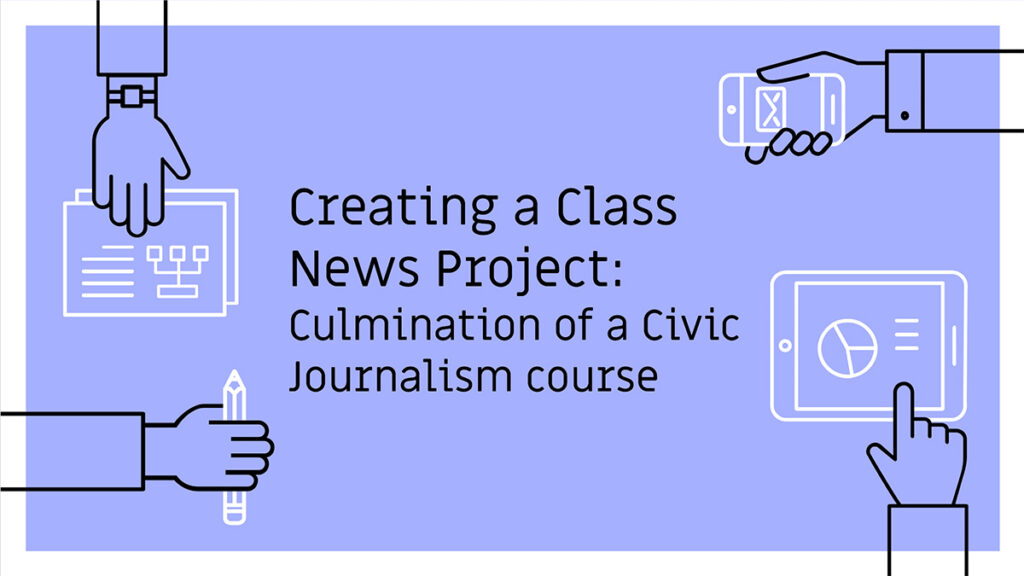The Class News Product
The Culmination of a Civic Journalism Experience
What They Know
In a survey class on civic journalism students might learn some of the history of journalism in this country, and why the press considers itself as the Fourth Estate. Students will gain an understanding of ethical responsibilities that require fair, unbiased and accurate reporting. They will have learned how to conduct interviews with news sources, how to write basic news stories using the inverted pyramid, and how to go beyond that basic format. They will have strategies for writing feature stories, opinion pieces and sports stories. They will delve into podcasts, blogging, and the influence of social media. They might learn how to take news photos or videos. Students will gain an understanding of different roles present in a news operation. Instruction will show them some components of the physical presentation of the news product, for a print, visual or digital product.
The class newspaper will help them synthesize all of this knowledge.
Download the teacher slideshow (PowerPoint):
A Class News Product Assignment
Students in the last weeks of the course will work collaboratively to create a newspaper or news product that will demonstrate different components of the course. It also will present a balance of information that will be meaningful or interesting for an audience.
The First Day
If the class is big, divide students into two or three groups. Students will spend the allotted time brainstorming. As a group they will agree on a name for their publication. They also will select editors, who will have more responsibilities for completion of the project. The newspaper group also should create a list of possible stories. By the end of the time the editors should assign those stories or responsibilities to group members.
Everyone must have a role as either an editor or reporter. Everyone will have to write a story, with one exception. If students are doing a traditional newspaper product, the person doing the layout will only have to do the layout because of the time it takes to complete this task.
The editor also will set a series of deadlines for completion of the work.
Next Steps
Reporters will begin the process of gathering information from sources. Once they have conducted their interviews, they will begin writing their stories.
Editors will monitor the progress reporters are making.
The editor-in-chief, news, sports and opinion editors will work with the layout editor to develop a format for the news product.
Copy Editing
After the deadline for completion of stories, each person will assume the role of copy editor. As such they will edit stories for accuracy and content.
The section editors (News, features, opinion, sports) and editor-in-chief will complete final edits of stories and then determine the general location of stories within the publication based on news value.
After all of this takes place, the layout editor will create the physical news product.
Publication
If the news teams create a newspaper, make enough copies of each paper and present them to the class. If students are using a different format, they share their product with the teacher, who then will share it with the students.
Reflection
Students will have time to read and absorb the news product. Then seek comments from the class regarding the positive qualities of each publication. To continue the reflection allow students to share their observations about the project and the difficulties and positive aspects of the assignment.
Assessment
Consider how to assess the work of individuals and of the group. Finding a way to assess the individual as well as the group will make all students accountable for the end product. It can help to develop a template for the group evaluation that reflects what you asked the students to do and how they performed these tasks.


